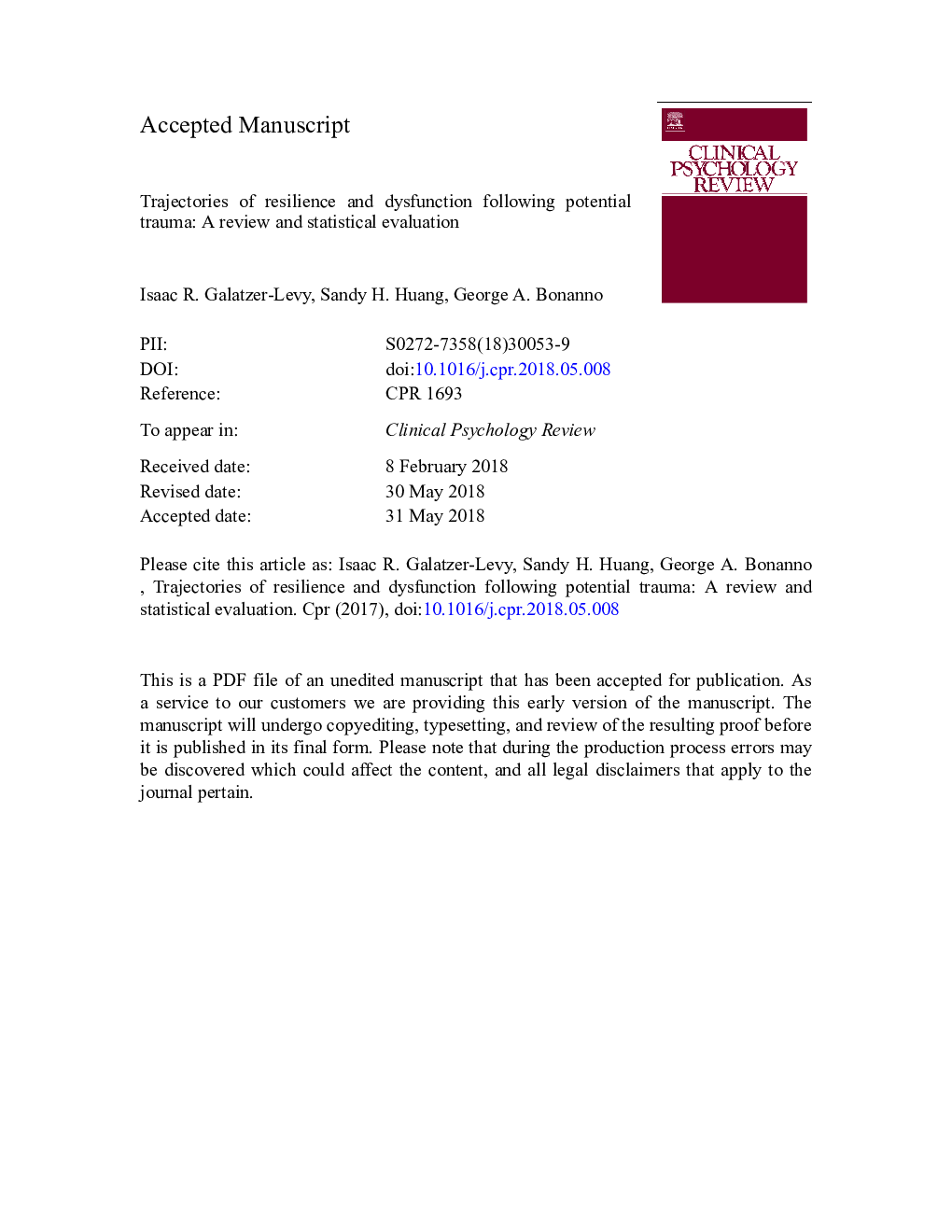| Article ID | Journal | Published Year | Pages | File Type |
|---|---|---|---|---|
| 7263370 | Clinical Psychology Review | 2018 | 41 Pages |
Abstract
Given the rapid proliferation of trajectory-based approaches to study clinical consequences to stress and potentially traumatic events (PTEs), there is a need to evaluate emerging findings. This review examined convergence/divergences across 54 studies in the nature and prevalence of response trajectories, and determined potential sources of bias to improve future research. Of the 67 cases that emerged from the 54 studies, the most consistently observed trajectories following PTEs were resilience (observed in: nâ¯=â¯63 cases), recovery (nâ¯=â¯49), chronic (nâ¯=â¯47), and delayed onset (nâ¯=â¯22). The resilience trajectory was the modal response across studies (average of 65.7% across populations, 95% CI [0.616, 0.698]), followed in prevalence by recovery (20.8% [0.162, 0.258]), chronicity (10.6%, [0.086, 0.127]), and delayed onset (8.9% [0.053, 0.133]). Sources of heterogeneity in estimates primarily resulted from substantive population differences rather than bias, which was observed when prospective data is lacking. Overall, prototypical trajectories have been identified across independent studies in relatively consistent proportions, with resilience being the modal response to adversity. Thus, trajectory models robustly identify clinically relevant patterns of response to potential trauma, and are important for studying determinants, consequences, and modifiers of course following potential trauma.
Related Topics
Health Sciences
Medicine and Dentistry
Psychiatry and Mental Health
Authors
Isaac R. Galatzer-Levy, Sandy H. Huang, George A. Bonanno,
